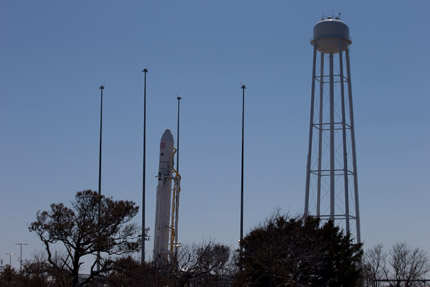NASA’s Wallops Flight Facility hosts test of new commercial rocket
Ars Technica » Scientific Method 2013-04-22

For decades, the Space Shuttles were the primary way the United States transported cargo and people into low-Earth orbit. Upon retirement of the aging fleet of Shuttles, NASA has promoted a public-private partnership with companies that are developing new rockets for transport into low-Earth orbit. One of these companies, Orbital Sciences Corporation, is test-launching a new rocket design at NASA's Wallops Flight Facility in Virginia this week.
Orbital's design, known as Antares, is a multi-purpose middleweight rocket built to carry non-human payloads into space. A major part of its intended purview is robotic delivery to the International Space Station (ISS), an important task for supplying long-duration stays. This week's launch from Wallops is the first orbital test of Antares.
While NASA's Commercial Orbital Transportation Services (COTS) program for Station resupply only dates to 2006, Orbital has been developing rockets since 1990, beginning with the airplane-launched Pegasus. (For comparison, SpaceX was founded in 2002 and Virgin Galactic began operations in 2004.) Antares is based on Orbital's earlier designs, including the ground-launched Minotaur and Taurus rockets. However, the new design is much heftier, capable of carrying up to 6,120 kilograms (about 13,500 pounds), much higher than Minotaur's 1,730 kg maximum. According to the Orbital website, Antares is also capable of launching payloads on interplanetary trajectories.
Read 4 remaining paragraphs | Comments